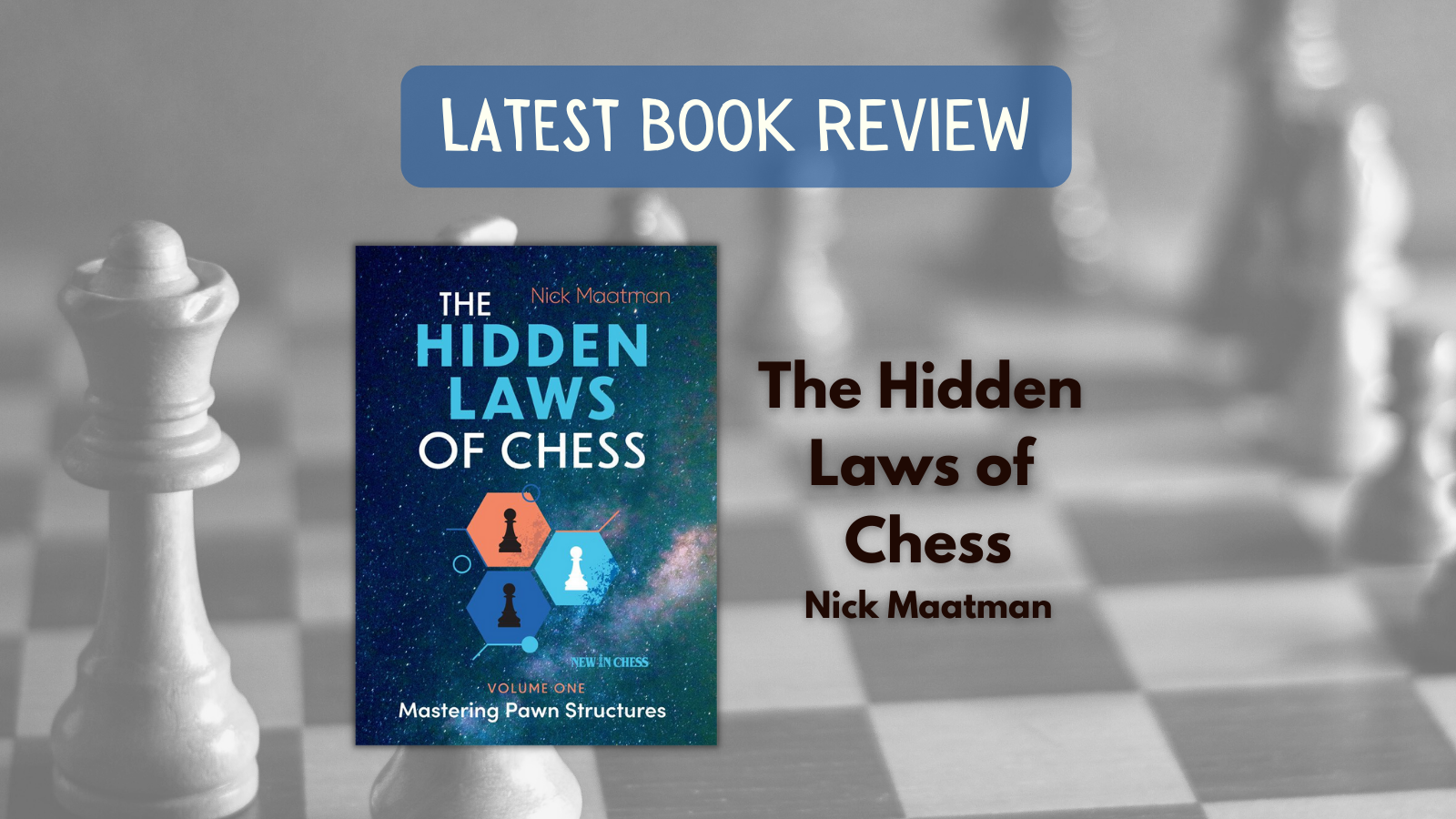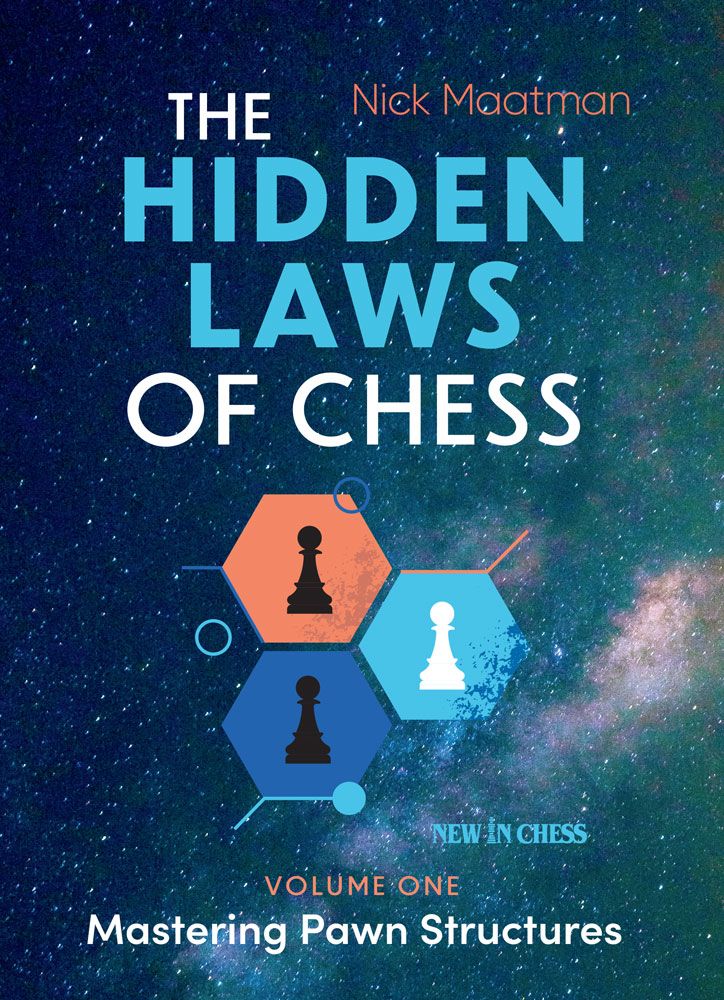Have you ever wondered how strong chess players immediately grasp what is happening in complex positions? The secret is pawn structures. The pawn structure dictates the game’s flow, and different structures require distinct approaches. You can improve your game by studying a large variety of pawn structures and the Hidden Laws of Chess.
So what are the Hidden Laws of Chess? They are best explained by contrasting them to the ‘Obvious Laws of Chess’ which include the perks of capturing pieces, the benefits of development, and the merits of king safety. The Hidden Laws of Chess operate under the surface level – they can only be derived by a deeper investigation of the game.
These Hidden Laws of Chess are context dependent. Different pawn structures give rise to different laws. That’s why the book is divided into 8 different chapters. Each chapter deals with a distinctive aspect of pawn structures.
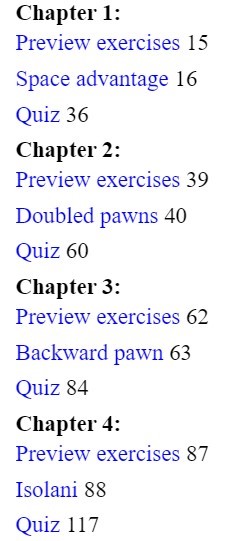
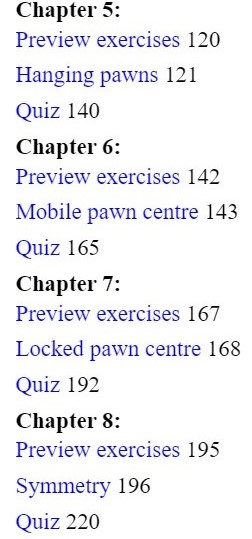
In the first chapter, we start out with the importance of space. A well-known Hidden Law of Chess is that the side that is enjoying a space advantage usually benefits from a crowded board, while the side that is at a space disadvantage prefers to exchange pieces. This concept has a variety of different applications. A simple, yet instructive application appeared in a recent game between Anish Giri and Teimour Radjabov, 2022. An inaccuracy by Black in the opening phase allowed Giri to build a lovely center. How should White continue?
Giri determines that there is no need to rush, and he calmly improves his position with 12.h3 taking away the g4-square from the black pieces. Notably, this prevents a reduction of material by means of a future …Bg4. After 12…Ne7 Giri’s next move was even more instructive. Your first inclination may be that an exchange of bishops is not necessarily to White’s detriment – after all, the black bishop is occupying a nice square, with control over both flanks. But a closer inspection reveals that White’s central control makes Black’s position somewhat cramped. An exchange of bishops would allow black to play …Qxd7 and all his pieces would start to breathe again.
Giri thus continued with 13.Bf1! preserving all pieces on the board. Both 13.Bc4 and 13.Bd3 are valid alternatives, but the former allows Black to strike back in the center with 13…d5 while the latter grants Black the option to harass the bishop with a …Ne7-g6-f4 maneuver. The passivity of White’s bishop on f1 is only temporary. On a later occasion, the bishop rejoined the battle and Giri went on to win an excellent game.
The fourth chapter delves into the domain of isolated queen’s pawn (IQP) positions. While many players may know that in IQP positions the defending side should try to exchange minor pieces, there is a related hidden law of chess that is far less well-known: in order to maximize winning chances, the side who is playing against the IQP needs to preserve heavy pieces. An instructive example is the following fragment:
The creative Vasyl Ivanchuk has the white pieces against Levon Aronian. It is clear that White has the advantage, as Black has no apparent compensation for the IQP and the material has dwindled. Still, transforming this advantage into a full point is no trivial task. Here, the natural 17.Rac1 will lead to an exchange of all the rooks after 17…Rfc8 18.Rxc5 bxc5 19.b4 Kf8 20.bxc5 Rxc5 21.Rxc5 Nxc5 when White is still better, but the advantage shouldn’t be sufficient for victory.
Ivanchuk needs to preserve rooks and hence played the extraordinary 17.Rcc1!!. After 17…Rfc8?! 18.Rd1 Rc2 19.Bb5! Nf8 20.Rab1 Ivanchuk was ready to kick the intruding rook. Instead, Aronian could have alleviated his problems by at least exchanging one pair of rooks with 17…Rxc1. In the game, Ivanchuk slowly managed to untangle. Eventually, the d-pawn dropped and Ivanchuk converted his advantage. Moves like 17.Rcc1 can only be played if one has acquired a deep understanding of the hidden laws of chess.
The book is also permeated with exercises, which allow you to put your knowledge of the hidden laws to the test. Consider for instance the following challenging exercise, that features the topic of hanging pawns. How should Black proceed?
Hanging pawns have many parallels with IQP pawns. Similarly, the attacking side often tries to arrange a well-timed d4-d5, while the defending side aims to exchange minor pieces. Thus a natural move that may come to mind in the diagram position is …Bb4+ in order to exchange a pair of bishops. This is a perfectly healthy approach. However, by far the best move is the surprising 7…e5!! which yields Black a clear advantage. This move may come as a shock, as White seems to have sufficient control over the e5-square.
A closer inspection of the possible variations reveals that both captures are undesirable:
- 8.Nxe5 Bb4+ 9.Bd2 runs into 9…Qxd4! when Black wins the exchange after 10.Bxb4 Qxa1.
- Alternatively, 8.dxe5 Qxd1+ 9.Kd1 Ng4 10.Ke1 Nc6 gives Black a huge initiative.
Hence, White has to settle for 8.d5 Bb4+ 9.Bd2 Bc5! when Black’s dark-squared control grants him a sizable advantage. A well-timed push of the e- or b-pawn are effective methods of disrupting the hanging pawns, and we just witnessed a peculiar application.
The book contains dozens of actionable tips, instructive games, and carefully selected exercises, with a touch of science and philosophy. If you are an amateur player who is serious about improving your positional fundamentals, you may consider picking this book up. And if the book somehow doesn’t make you wiser about chess you might learn something else: maybe all chess teachers are charlatans after all?
Nick Maatman
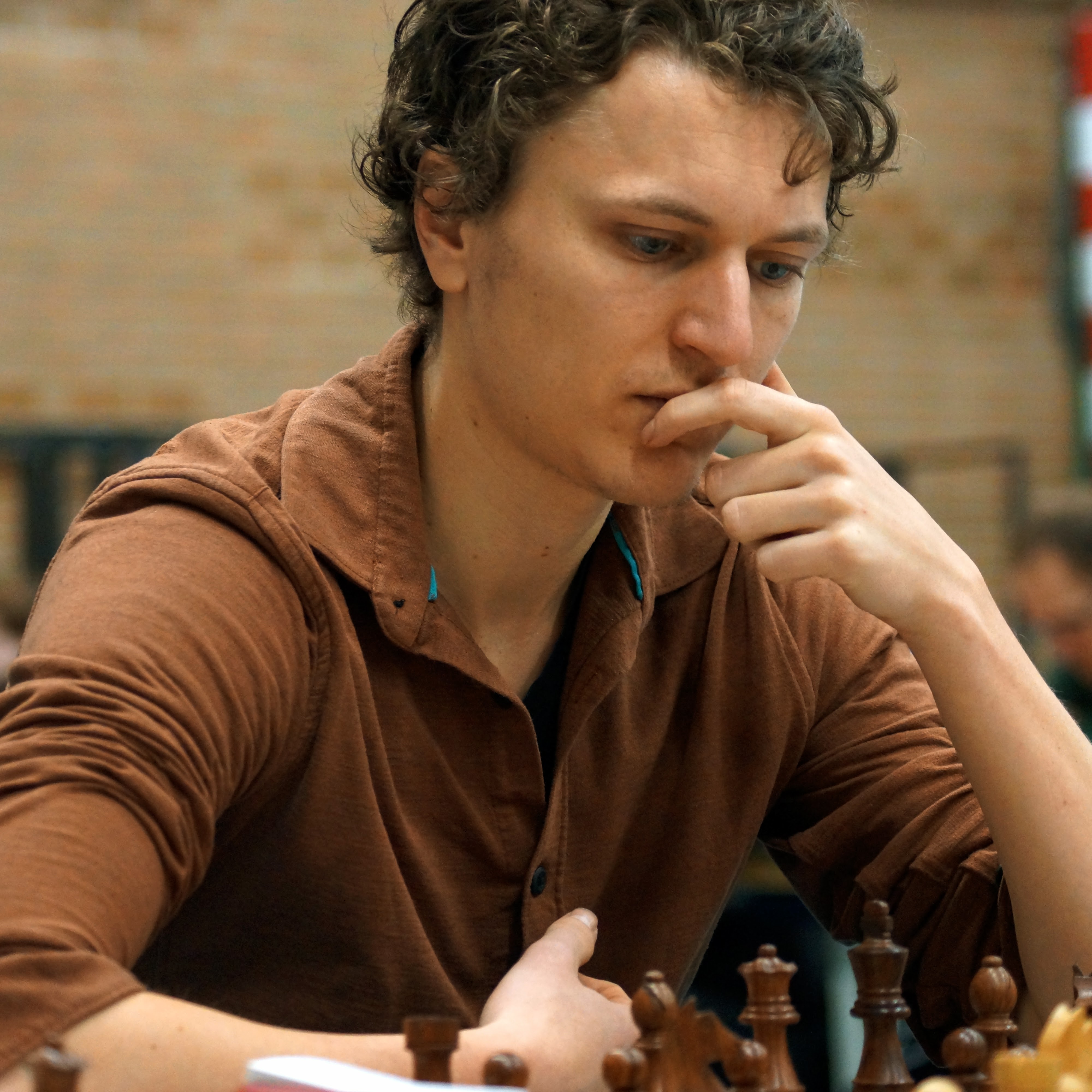
Nick Maatman (1995) is an International Master, experienced chess coach, and training partner of Super-GM Jorden van Foreest. Maatman has won the Dutch U20 Championship and has beaten many strong grandmasters in tournament games. The Hidden Laws of Chess is his first book, but he expects many more to follow. He graduated from Groningen University in both Business and Philosophy.
- The Power of Pattern Recognition: The Woodpecker Method 2 - August 20, 2024
- Rock Solid Chess: Volume 2 - February 21, 2024
- Unsung Heroes of Chess - February 19, 2024
